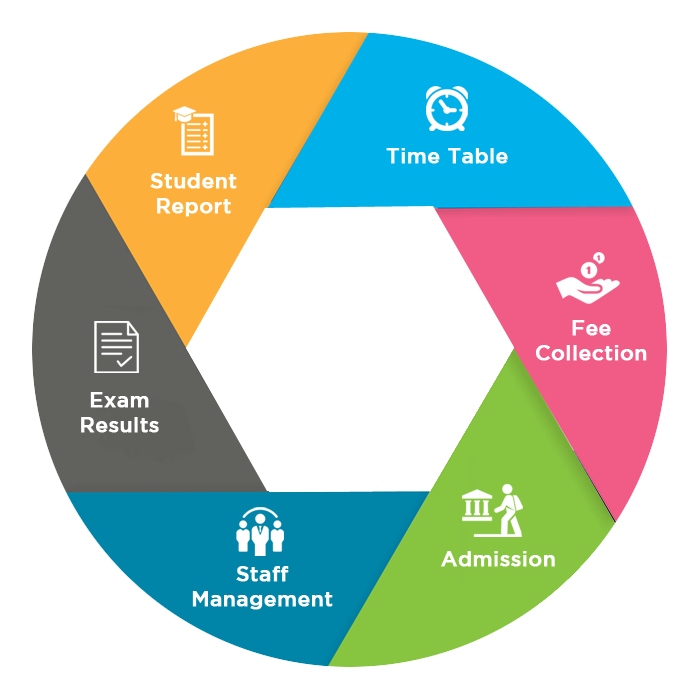
Managing administrative tasks in educational institutions can feel like juggling fire—there’s scheduling, attendance, fee tracking, admissions, exam management, and more. For school administrators, this constant barrage of responsibilities often leads to burnout, inefficiency, and costly errors. Thankfully, modern technology offers a practical solution: school ERP software. These comprehensive platforms help streamline school operations, bringing structure and simplicity to even the most chaotic academic environments.
What Is an ERP System for Schools?
ERP stands for Enterprise Resource Planning, a term traditionally associated with business management tools. However, when tailored for schools, an ERP system becomes a centralized platform that integrates various administrative functions into one digital interface. This includes student information systems, staff payroll, inventory management, and communication tools—all accessible via web or mobile devices.
Why Administrative Tasks Become Overwhelming
In many institutions, administrative duties are still handled manually or through fragmented digital tools. Consider this scenario: one platform for attendance, another for finances, and yet another for communication. The result? Duplication of efforts, mismatched data, and increased workload for staff.
A study by the National Center for Education Statistics highlighted that administrative staff in K-12 schools spend approximately 30% more time on redundant tasks due to poor system integration. When this is scaled across hundreds of students and staff, the cumulative time lost becomes staggering.
How School ERP Software Eases the Burden
Implementing an ERP system tailored for educational environments helps in multiple ways:
Centralized Data Management
Instead of storing data across spreadsheets and documents, all information—student records, faculty details, academic results—is stored in one secure platform. This ensures easy access, better data accuracy, and faster decision-making.
Automated Processes
Tasks like attendance tracking, timetable scheduling, and report generation can be automated with minimal human intervention. Automation reduces errors and frees up staff to focus on more strategic roles, such as improving student outcomes or parent engagement.
Improved Communication
One of the most underrated benefits of ERP systems is improved communication. With integrated messaging tools, teachers can easily send updates to parents, notify students about changes in schedules, and coordinate with other staff. According to a McKinsey report on digital transformation, institutions that adopt internal communication tools see a 20–25% increase in employee productivity.
Customizable Access and Permissions
With different user roles—administrators, teachers, students, and parents—ERP platforms ensure that each stakeholder only accesses relevant data. This not only maintains data privacy but also simplifies the user experience.
Real-World Example: How a Mid-Sized School Benefited
Take the case of Horizon Public School in Pune, India. Before adopting an ERP system, the school relied heavily on Excel sheets and paper records. With over 1,200 students, managing data accuracy and responding to parent queries became a nightmare. Within six months of implementing a school ERP, the administration reported:
-
A 40% reduction in paperwork.
-
60% faster response time to parental inquiries.
-
Accurate, real-time attendance records.
-
Higher staff satisfaction due to reduced administrative workload.
Such case studies highlight the real, measurable benefits of ERP adoption in education.
Factors to Consider When Choosing a School ERP System
Not all ERP platforms are created equal. When evaluating options, institutions should look for:
User-friendly interface: Ensure the platform is intuitive enough for non-tech-savvy users.
Mobile compatibility: Parents and teachers increasingly prefer mobile access for convenience.
Scalability: As the institution grows, the ERP should adapt without significant reinvestment.
Data security: Given the sensitive nature of student and staff information, choose a platform with strong encryption and compliance standards (like GDPR or FERPA).
Integration capabilities: The ability to sync with existing tools (like accounting software or Google Classroom) is a huge plus.
Common Misconceptions About ERP Software
Some schools hesitate to adopt ERP systems due to myths like high costs, complex setup, or fear of change. However, many modern ERP providers offer cloud-based, subscription models that are affordable and easy to implement. Moreover, most platforms include onboarding and training to ensure a smooth transition.
Final Thoughts: Embrace the Future, Minimize the Headache
Administrative headaches aren’t inevitable. They’re often a sign that the systems in place are outdated or inefficient. In a time when technology drives most industries forward, educational institutions cannot afford to be left behind. School ERP software is more than just a digital tool—it’s a strategic investment that enhances operational efficiency, promotes transparency, and fosters better learning environments.
Comments on “Admin Headache? There’s an ERP for That.”